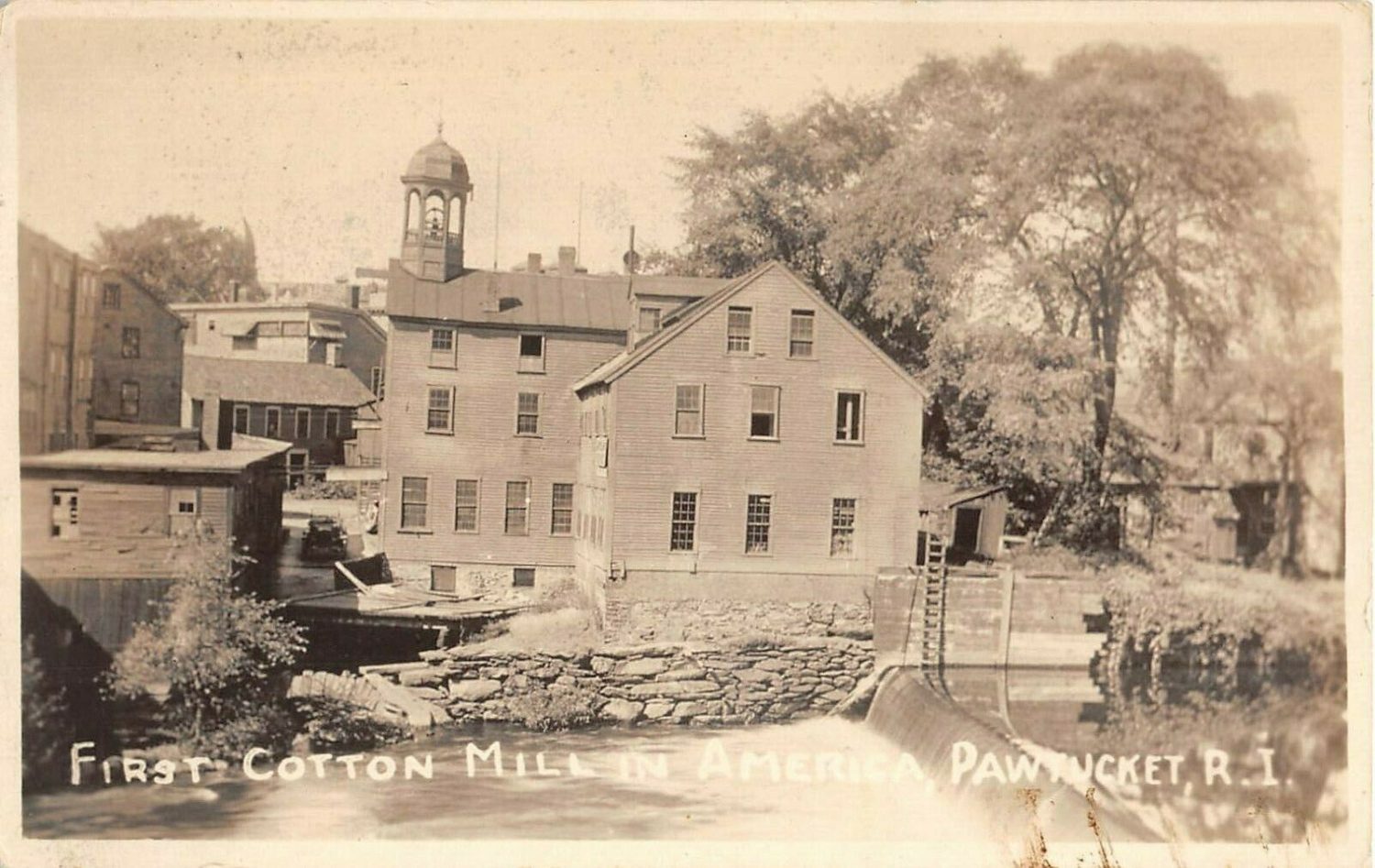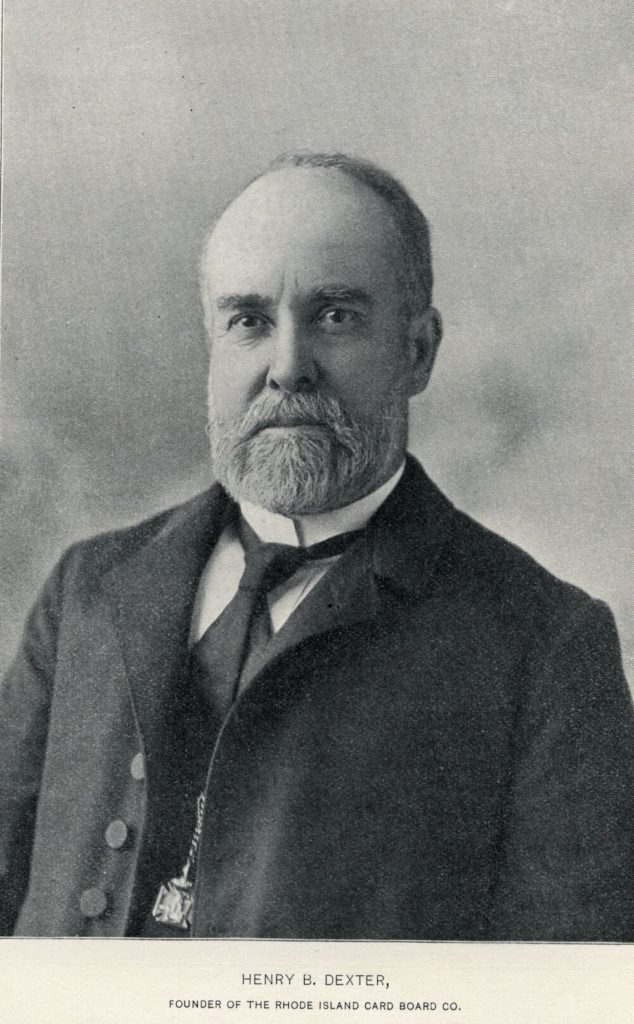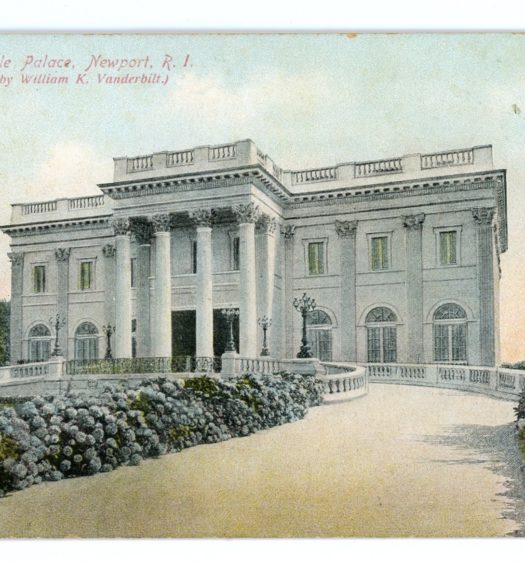Simon Willard Thayer is celebrated today as one of Rhode Island’s earliest historic preservationists, though he perhaps never intended to be. Tragically, Thayer was killed on the very day that his efforts to save the Old Slater Mill were being celebrated at a major event in Pawtucket.
In 1920, S. Willard Thayer, as he was known, was a successful industrialist and civic leader. He was the treasurer of Lebanon Knitting, a company he operated alongside relations Alanson and Edward Thayer out of the Lebanon Mills, a steam-powered brick mill built by the Thayers on the Blackstone River in 1901.
Today the former Lebanon Mills is known as Riverfront Lofts, a swanky collection of condominiums with enormous windows, original wood floors and brick walls, where relics of the past carefully placed in the building foyer remind residents and visitors of its 20th century history. It was one of the first mill conversions to residential use in the City of Pawtucket.
As it related to S. Willard Thayer, the Old Slater Mill sat diagonally across from the Lebanon Mills on the Blackstone River. If he looked out the large mill windows and across the river in 1920, he would have seen an assembly of industrial buildings that ran from Exchange Street to Main Street, among them and to his left the Old Slater Mill, with barely any room in between.
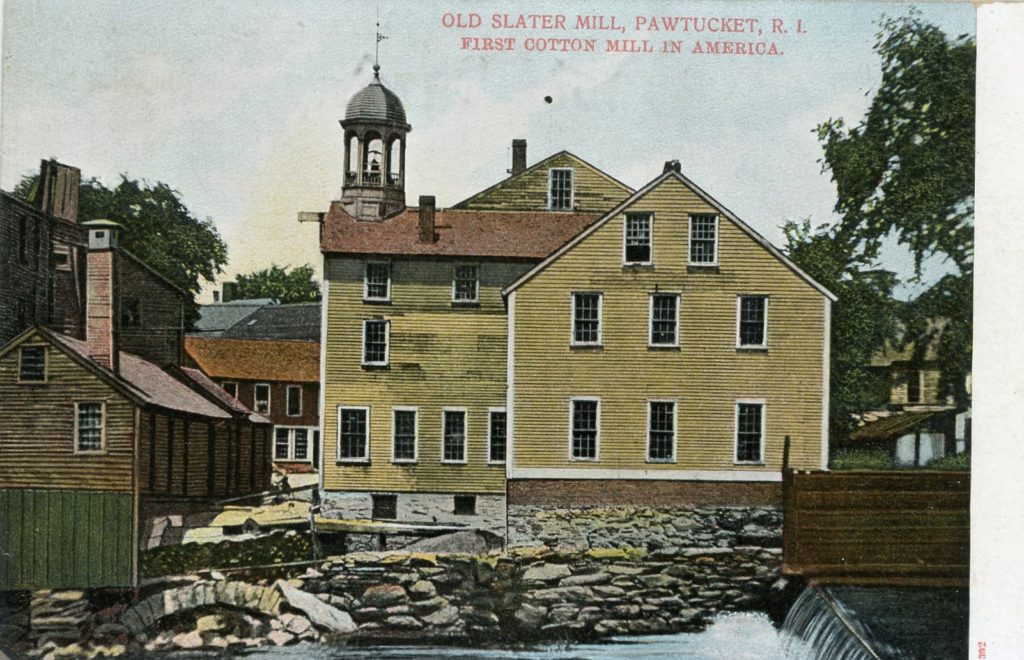
Old Slater Mill from across the Blackstone River, circa 1915, post card (Sanford Neuschatz Collection)
It is safe to assume that as an executive, Thayer enjoyed a commanding view of the river and Old Slater Mill from his office, not unlike Samuel Slater’s view from the White Mill on the east bank of the river a century before. Because of the density of buildings in downtown Pawtucket in 1920, it was difficult to see Old Slater Mill from Roosevelt Avenue. Clearly, Thayer’s riparian proximity to the mill, and his interests in the textile manufacturing industry that provided his livelihood, reinforced his appreciation for the history of the site.
Thayer was certainly connected enough to know that the old mill’s proprietor, Job L. Spencer, had died, and that the mill was going to be sold off by Spencer’s estate, possibly to settle debts, or because the heirs he may have had were not interested in the aging building.
As is well known, Old Slater Mill was the site of the first water-powered cotton spinning factory in the United States. But by 1920, Old Slater Mill had gone through a series of uses and a myriad of tenants who manufactured everything from woven haircloth to coffin trimmings, bicycles and steam engines. Several renovations had enlarged the structure in all directions, and the disheveled building was showing its age—127 years in 1920.
Thayer and others in the community had good reason to believe the Old Slater Mill was in jeopardy of being torn down to make room for a new business block. He and a group of fellow textile executives discussed the need for an organization to take responsibility for preserving the mill. They were not quite prepared to execute a plan, yet they feared they might lose the chance if they did not act quickly.
Thayer acted swiftly and decisively, purchasing the mill from the estate of Job L. Spencer for $40,000, with the intention of holding title to the property until a new organization dedicated to historic preservation of the mill could be formed and incorporated. That organization would be the Old Slater Mill Association (OSMA).
At the first meeting of the OSMA on March 29, 1921, Thayer was elected First Vice President of the OSMA. Henry C. Dexter was elected President, E. Russell Richardson, Second Vice President, Charles S. Foster, Treasurer, and Roscoe M. Dexter, Secretary. These men were among the fourteen original incorporators of the organization.
As news of the group’s plans spread, it caught the attention of Mrs. H. Nelson (Mabel) Slater, widow of the grandson of Samuel Slater. She pledged $32,000 toward the purchase of the mill from Thayer. A special committee was formed of the Pawtucket Chamber of Commerce to exercise the option to purchase the mill. Henry Dexter chaired that committee as well. The OSMA purchased the mill from Thayer.
Once formed, the original incorporators of OSMA got right to work, raising funds to restore the building to its circa 1840 appearance. This was a major undertaking, and their campaign attracted a great deal of interest from national manufacturers, many of whom committed $1,000 toward the effort, earning them the distinction of Founder status.
In the summer of 1925, OSMA was contacted by the Rhode Island Loyalty League, an organization dedicated to the “buy local” movement of the time, when Rhode Island was a powerhouse center of textile manufacture. “Keep the Mill Wheels Turning” was the League’s slogan, and it’s mission, as printed in The Pawtucket Times, was “to stimulate through organized effort, interest in, and the sale to Rhode Islanders of the textile products of this state.”
The League hoped to base its annual Textile Appreciation Week activities at Old Slater Mill. Activities would include an exhibition featuring displays by all the major manufacturers in Rhode Island, as well as the textile division of the U.S. Department of Commerce and other national interests. The festivities were scheduled to open on Labor Day, September 7, 1925, with a tolling of the mill bell, and speeches by U.S. Senator Jesse Metcalf and other notables would be broadcast live over WJAR Radio. The Pawtucket Times was to run a special section the Saturday prior to cover the event and the re-opening of Old Slater Mill.
This was a huge deal for OSMA, as it allowed the Trustees to unveil the renovations of Old Slater Mill during the festivities and before representatives of the media. Henry Dexter was invited to give one of several weekly addresses that would also be broadcast over the radio.
On Labor Day morning, Monday, September 7, 1925, S. Willard Thayer awoke at his home at the Thayer summer camp on Pleasant Lake at Chatham, Massachusetts. He invited a friend, aviator Linwood Reynolds, to accompany him on a “morning spin,” according to the account of The Pawtucket Times the next day.
It was said, according to the story, that Thayer “kept a speed boat and a fast-running car” at his summer camp, and that he was “inclined to give his machine trial speed tests” on Brewster Road. By these accounts, Thayer was a man with a penchant for adventure. At this time, racing speed boats and fast cars were dangerous activities and accidents were not uncommon.
The Pawtucket Times went on to report that Thayer was at the wheel of a “racing car” as it collided with another vehicle on the Harwich-Brewster Road in Massachusetts. Thayer became “pinned in the driving seat of the car,” and succumbed to his injuries. Four others were severely injured, including Thayer’s passenger.
Later that evening in Pawtucket, Thayer’s colleagues, in shock and grieving, remained dedicated to the mission they had all shared with Thayer. Old Slater Mill was opened to much fanfare, but without the mill’s original preservation champion among them. The sound of patriotic music performed by Goffe’s Orchestra of Pawtucket filled the air to mark the arrival of Senator Metcalf to the refurbished mill.
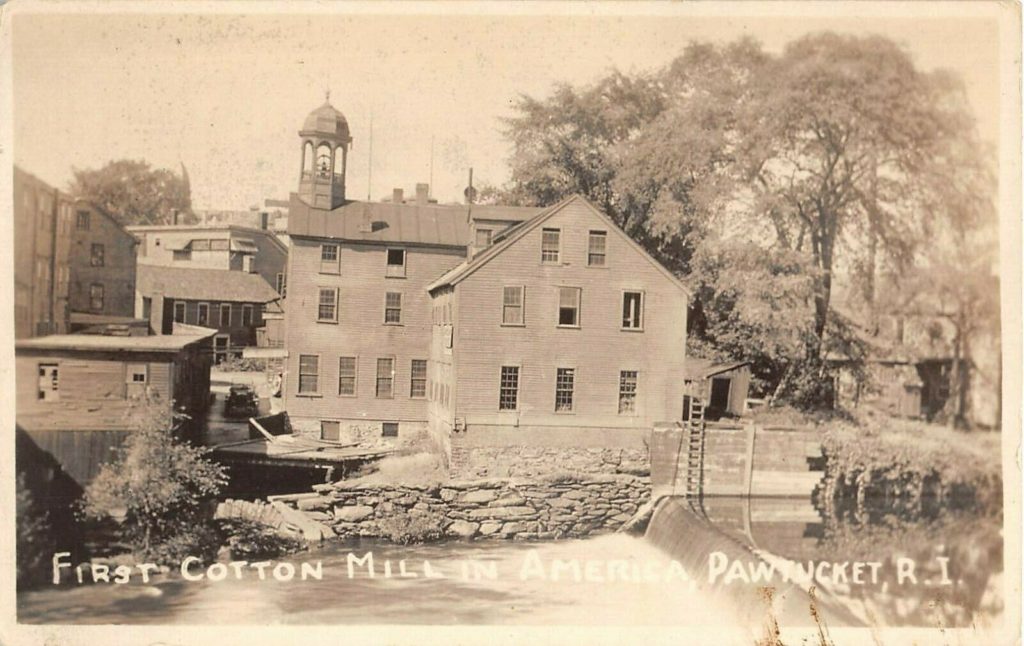
Old Slater Mill from across the Blackstone River, circa 1910, post card. Note the parked automobile (Sanford Neuschatz Collection)
The next morning, The Pawtucket Times greeted its readers with these headlines: “Old Slater Mill Bell Bids Rhode Island Citizens to Exhibition of Textiles,” and “S. Willard Thayer, Civic Leader Here, Dies in Motor Crash.”
In the minutes of a Special Meeting of the Board of Trustees on October 12, 1925, it was recorded:
“In view of the untimely death, since the last meeting of the Board, of S. Willard Thayer, First Vice President of this Association, who was killed in an automobile accident at Chatham, Mass., on the morning of Labor Day, September 7, 1925, it was unanimously voted that a minute be entered in these records expressing our sorrow for the loss to each [member] of the Board personally of a staunch friend and the loss to this Association as well of one of its staunchest friends and backers who, by pledging his own credit, and acquiring title to the Old Slater Mill Estate as Trustee in order that it might be conveyed later to this corporation when formed, paved the way for its acquisition by the Old Slater Mill Association.”
In 2021, the OSMA, on the observance of its centennial, celebrates the much larger outcome of Thayer’s act of historic preservation. Nearly one hundred years to the day of the incorporation of OSMA in 1921, the Old Slater Mill National Historic Landmark was accepted by the U.S. Department of the Interior into the National Park Service, formalizing the boundary of the Blackstone River Valley National Historical Park, and insuring the long-term preservation of the 1793 Old Slater Mill, 1810 Wilkinson Mill, and the 1758 Sylvanus Brown House.

